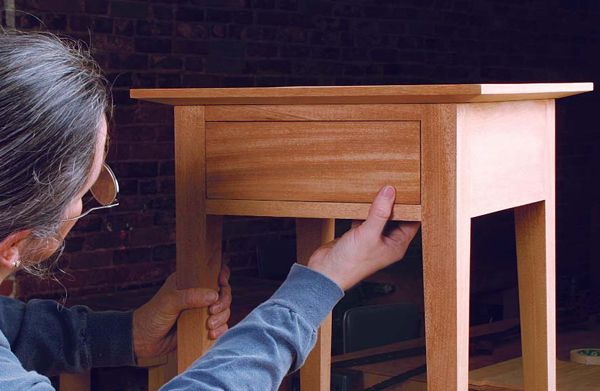Making Traditional Dovetailed Drawers
Mastering half-blind dovetails is the key to building reliable drawers
Synopsis: Dovetailing a drawer is not the daunting task you might think — all it requires is a little know-how and practice. Janet A. Collins, an instructor at the North Bennet Street School in Boston, steps readers through every detail of the process, including information on how to build the drawers to fit the case, and methods for cutting and fitting half-blind and through dovetails. She also provides tips for setting the bevel-gauge angle for dovetails of various pitches.
The dovetailed drawer has long been the hallmark of quality, handcrafted furniture. And for good reason: A dovetailed drawer is both beautiful to look at and strong enough to last 200 years. But dovetailing a drawer is not the daunting task you might think—all it requires is a little know-how and practice. No matter what size drawer you’re building or what piece of furniture it’s going in, the techniques are the same. If you can build a drawer for a simple Shaker table, you can build a dozen of them for an 18thcentury highboy.
The key to building a drawer is learning to cut dovetails. A traditional dovetailed drawer combines both half-blind and through-dovetails. Because you want to see dovetails only on the drawer sides, use half-blind dovetails at the front of the drawer. Through-dovetails are used to connect the back to the sides. In this article I’ll walk you through cutting half-blind and through-dovetails, especially as they concern building drawers. I’ll focus mainly on cutting half-blind dovetails, because once you learn to cut those, through-dovetails become a piece of cake.
I recently taught a workshop on cutting half-blind and through-dovetails. At the end of the three-day class, students not only knew how to lay out and cut these two joints, but they also knew how to build a traditional dovetailed drawer. The first order of business is to tune up your tools: two chisels, a dovetail saw and a marking gauge. Using properly tuned tools makes your woodworking life much easier.
As you’re working, remember to cut pins on the drawer front and back, and tails on the drawer sides. Dovetails go together and come apart only one way, and this orientation works with the movement of the drawer being opened—you won’t loosen the joint as you open and close the drawer.
From Fine Woodworking #157
For the full article, download the PDF below:
Fine Woodworking Recommended Products

Starrett 12-in. combination square

Stanley Powerlock 16-ft. tape measure

Marking knife: Hock Double-Bevel Violin Knife, 3/4 in.






















Log in or create an account to post a comment.
Sign up Log in